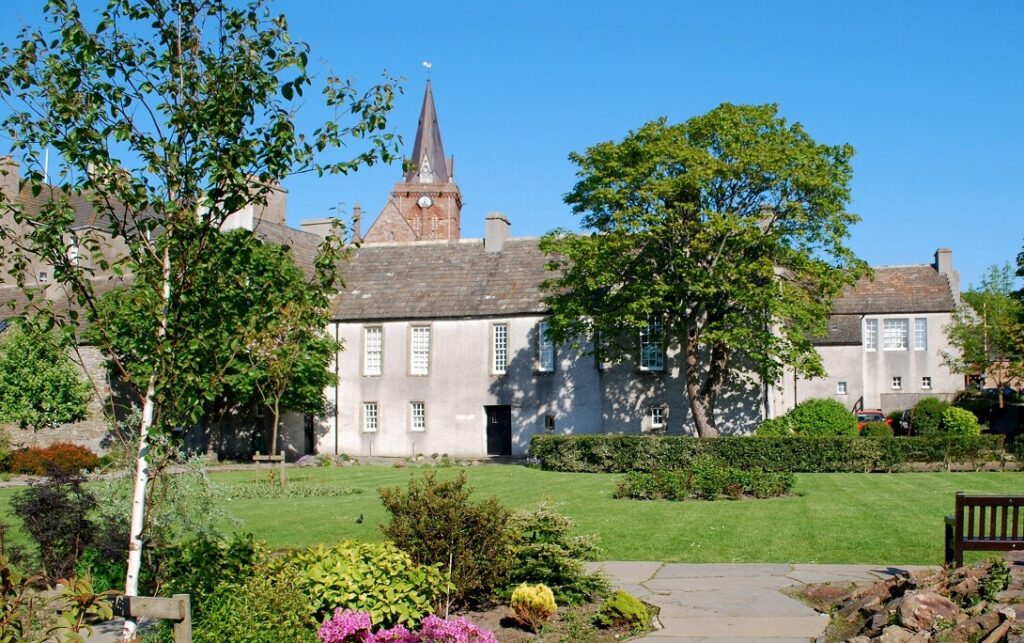The History of the Orkney Musuem
Housed in an A Listed building, The Orkney Museum displays the islands’ main collection of archaeology and history. The building was originally built as two official residences for the cathedral clergy in the 1530s, under the Catholic Church. After the Reformation the buildings were sold to Gilbert Foulzie, who changed his religion and became the first Protestant Minister of the cathedral. His coat-of-arms, along with those of his wife, are above the archway that spans the two building and is dated 1574. In 1642 the house was bought by the Baikie family, who were the lairds of Tankerness. This was their townhouse and became known as Tankerness House.

Tankerness House remained in the Baikie family until 1951 when it was sold to the Kirkwall Burgh Council, who split it up into flats. As the building became more unstable there were plans to have it demolished and replaced with a car park for the cathedral. A vocal band of supporters, including the painter Stanley Cursiter, called for it to be restored. They won the day and it was decided to turn the historic old building into a museum.
Tankerness House Museum opened to the public on 31st May 1968. The name was changed to The Orkney Museum in 1999, as it reflected the true nature of the collection.
The Orkney Museum Collection
The main core of the museum’s original collection came from the former Orkney Antiquarian Society. In 1976 a permanent curator was employed to professionally catalogue the collection. Bryce Wilson became Orkney’s Museums Officer and oversaw the development of Orkney’s museums. His presence at the museum meant that finds from archaeological digs could remain in Orkney rather than going to the National Museums Scotland, as they had formerly done.
The impressive collection of archaeological finds, as well as the important social history collection, are proudly on display to both local people and visitors alike.



